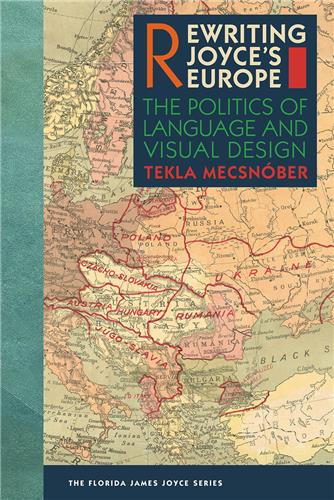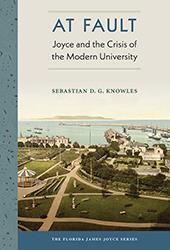In this book, the first to explore the role of disability in the writings of James Joyce, contributors examine the varying ways in which Joyce’s texts represent disability and the environmental conditions of his time that stigmatized, isolated, and othered individuals with disabilities.
The Florida James Joyce Series
Edited by Sam Slote, Trinity CollegeSam Slote
Trinity College
School of English
Trinity College Dublin
Dublin D02 PN40, Ireland
slotes@tcd.ie
There are 51 books in this series.
Please note that while you may order forthcoming books at any time, they will not be available for shipment until shortly before publication date
This book sheds light on how the text and physical design of James Joyce’s two most challenging works, Ulysses and Finnegans Wake, reflect changes that transformed Europe between World Wars I and II.
This innovative analysis shows how James Joyce uses the language of prayer to grapple with intangible things in his dreamlike masterpiece Finnegans Wake. Colleen Jaurretche moves beyond what scholars know about how Joyce wrote this work to suggest exactly why it follows the order it does in its finished form.
Joyce and Geometry reveals the full extent to which the modernist writer James Joyce was influenced by the radical theories of non-Euclidean geometry. Tracing Joyce’s obsession with measuring and mapping space throughout his works, Ciaran McMorran delves into a major theme in Joyce’s work that has not been thoroughly explored until now.
This book is the first in-depth study of the forty short texts James Joyce called “epiphanies.” Sangam MacDuff argues that the epiphanies are an important point of origin for Joyce’s entire body of work, showing how they shaped the structure, style, and language of his later writings.
At Fault is an exhilarating celebration of risk-taking in the work of James Joyce. Esteemed Joyce scholar and teacher Sebastian Knowles takes on the American university system, arguing that the modernist writer offers the antidote to the risk-averse attitudes that are increasingly constraining institutions of higher education today.
Ideal for readers new to Ulysses and written with a depth of knowledge that scholars have found invaluable, “Ulysses” Unbound is a clear and comprehensive guide to James Joyce’s masterpiece from one of the foremost Dublin-based Joyce experts.
Making the case that legal issues are central to James Joyce’s life and work, international experts in law and literature offer new insights into Joyce’s most important texts. They analyze Dubliners, A Portrait of the Artist as a Young Man, Giacomo Joyce, Ulysses, and Finnegans Wake in light of the legal contexts of Joyce’s day.
Demonstrating that one story from James Joyce’s Dubliners is not only a turning point in that book but also a microcosm of a wide range of important Joycean influences and preoccupations, Cóilín Owens examines the dense intertextuality of “A Painful Case.”











